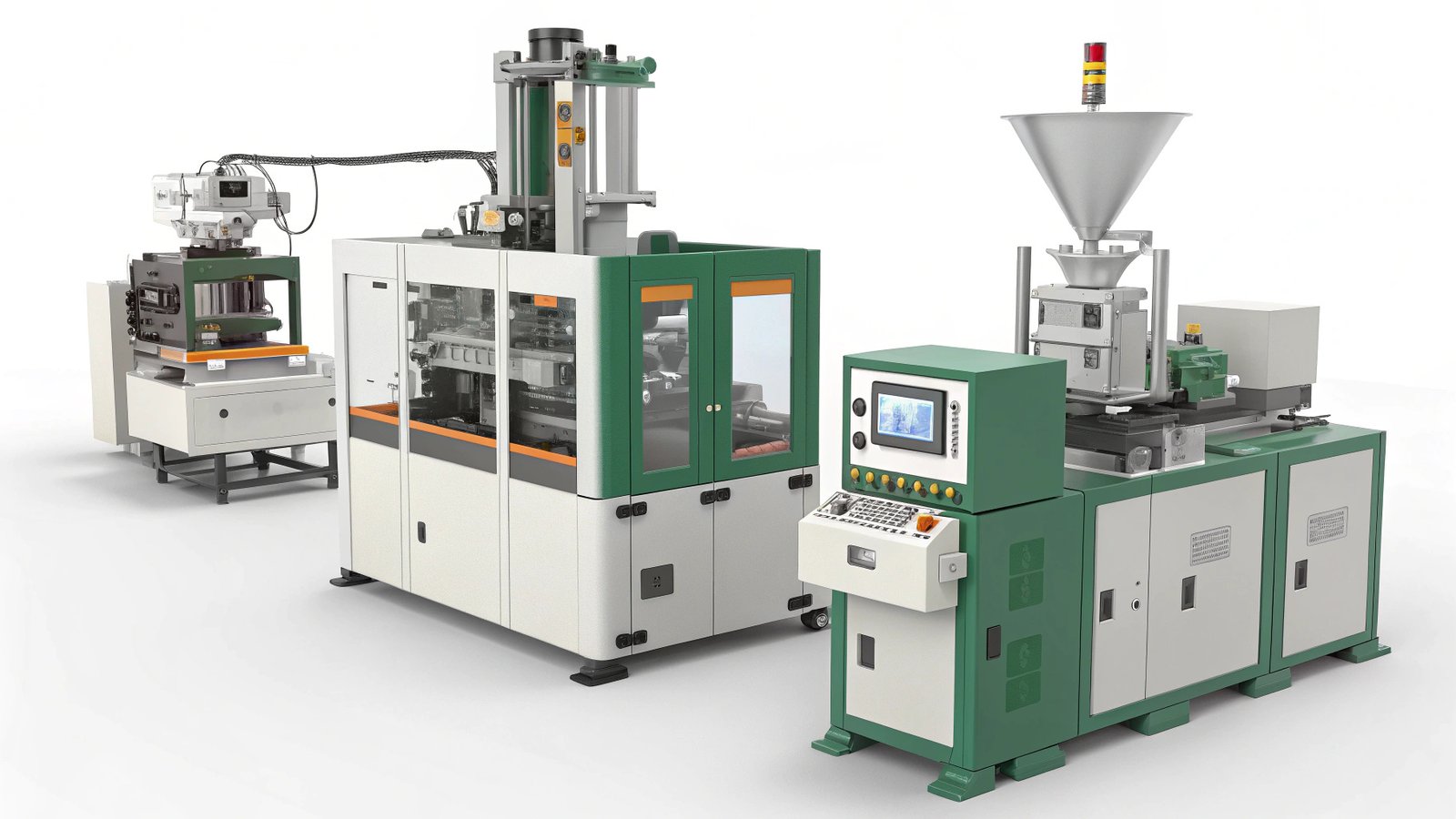Plastic product manufacturing is everywhere—but few people know how it really starts. If you’re producing connectors, housings, or precision parts, the machine behind it all may just be a vertical injection molding machine.
A vertical injection molding machine is a type of plastic molding equipment where the injection and clamping units are vertically aligned. It is ideal for insert molding and overmolding, commonly used in industries like automotive, electronics, and medical devices.
Transition paragraph:
I still remember when a US-based client asked me why his electronic connectors kept failing in production. What he needed wasn’t just another mold—it was a vertical machine designed for precision insert molding.
What is the difference between vertical and horizontal molding machines?
Many first-time buyers ask me: "Should I go with a vertical or horizontal injection molding machine?" This is more than just a layout decision—it affects cost, product type, and production flow.
Structure Comparison Table
| Feature | Vertical Machine | Horizontal Machine |
|---|---|---|
| Machine Layout | Vertical clamp + vertical injection | Horizontal clamp + horizontal injection |
| Ideal For | Insert molding, small parts | Large parts, mass production |
| Footprint | Smaller | Larger |
| Operator Access | Easier to insert parts manually | Less accessible |
Application Scenarios
- Vertical: Electronics, terminals, wire connectors, sensors
- Horizontal: Automotive bumpers, plastic containers, toys
Purchase Considerations
- Customization: Vertical machines offer flexible table designs (rotary, sliding).
- Space Efficiency: Consider factory layout constraints.
- Labor: Vertical models support manual insert molding.
How much does an injection molding machine cost?
I often get asked: “Can I get a decent machine under $20,000?” The answer depends on what you’re making and how much flexibility you need.
Vertical injection molding machines range from $10,000 to over $100,000. Price depends on tonnage, table configuration, brand, automation level, and country of origin.
Key Price Factors
| Factor | Description |
|---|---|
| Tonnage | 15T–200T affects mold size and clamping force |
| Configuration | Rotary/Sliding tables add cost |
| Brand | European/Japanese brands are premium |
| Automation | Servo motors, robotic arms raise price |
| Country of Origin | Machines from China offer better cost-performance ratio |
Budget Advice
- Startup buyer: 20–60T machine, manual table, ~$12,000–$25,000
- OEM factory: 100–200T, full auto rotary machine, ~$30,000–$80,000
- High-speed needs: Hybrid or all-electric types, $70,000–$120,000
Why are injection molding machines so expensive?
When I show a quotation to first-time buyers, they’re shocked. “Why so expensive?” they ask. Let me explain what you’re really paying for.
Injection molding machines are expensive due to their precision components, durable construction, high-end control systems, and ability to support 24/7 automated production.
Dive Deeper: What Makes Up the Cost?
1. Core Mechanical Parts
- Clamping system: Hydraulic or electric, must sustain high pressure
- Injection unit: Includes screw barrel, motor, nozzle—built for precision
2. Automation & Controls
- PLC + HMI: Smart control panels for efficiency
- Servo systems: Energy-efficient but costly
3. Mold Interface
- Machines must support high-precision molds with thermal & mechanical stability
- Custom mold interfaces = more tooling compatibility, higher cost
4. Certification & Compliance
- CE, UL, ISO9001 add to cost but ensure long-term reliability
What is an injection molding machine used for?
A machine is only valuable if it can make the right product. So, what exactly do businesses use injection molding machines for?
Injection molding machines are used across automotive, electronics, medical, and consumer industries to produce parts like housings, gaskets, lenses, tools, and terminals.
Industry Applications Overview
| Industry | Common Products |
|---|---|
| Automotive | Dash panels, switches, clips, connectors |
| Electronics | USB casings, IC sockets, terminal blocks |
| Medical | Syringes, casings, implantable parts |
| Consumer | Phone stands, tool handles, kitchenware |
Why Vertical Machines Win in Some Fields
- Insert Molding: Sensors, connectors, wire harnesses
- Overmolding: Rubber + metal parts (e.g., toothbrushes, plugs)
- Space Saving: Great for labs, pilot lines, R&D centers
Conclusion
Vertical injection molding machines offer precision, flexibility, and space efficiency. Whether you’re starting small or scaling up, understanding your application and cost structure will help you make the right choice.



